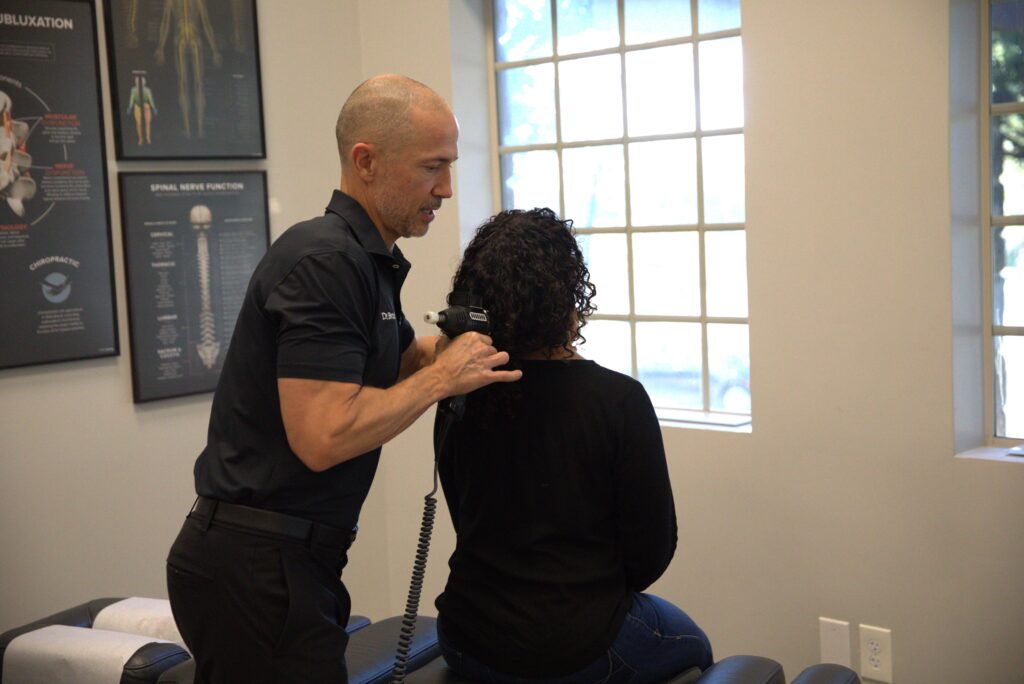The Importance of Managing Inflammation
Managing inflammation is essential for a healthy lifestyle. Chronic inflammation, if left unchecked, can contribute to the development of numerous diseases. By incorporating anti-inflammatory practices into your daily routine, you can reduce the risk of these health issues. This requires a comprehensive approach, focusing on diet, stress management, exercise, and chiropractic care.
Overview of Anti-Inflammatory Practices
To keep inflammation in check, it’s important to integrate several practices into your daily life. An anti-inflammatory diet, chiropractic care, and stress management techniques all play a role in reducing inflammation. Another effective treatment for inflammation is cryotherapy. These practices can help you manage stress, maintain a healthy weight, and reduce physical discomfort, leading to an overall improvement in your quality of life.
Diet’s Role in Reducing Inflammation
Your diet has a significant impact on inflammation levels in the body. To create an anti-inflammatory diet, focus on consuming foods that are rich in antioxidants and omega-3 fatty acids. Some examples of these foods include:
* Fatty fish, such as salmon and sardines
* Leafy greens, like spinach and kale
* Fruits rich in antioxidants, such as berries and citrus fruits
* Nuts and seeds, especially walnuts and flaxseeds
* Olive oil, which contains healthy monounsaturated fats
Foods to Avoid to Minimize Inflammation
Just as certain foods can help reduce inflammation, others can exacerbate it. To minimize inflammation, avoid foods that are processed or high in sugars and unhealthy fats. These include:
* Processed meats, like sausages and bacon
* Refined carbohydrates, such as white bread and pastries
* Sugary drinks, including sodas and sweetened juices
* Trans fats, often found in fried foods and baked goods
* Excessive alcohol consumption
Chiropractic Care and Its Benefits
How Chiropractic Care Reduces Inflammation
Chiropractic care can help reduce inflammation by improving spinal alignment and promoting better circulation. When the spine is misaligned, it can put pressure on nerves and other tissues, leading to inflammation. By realigning the spine, chiropractic care can relieve this pressure and allow the body to function more efficiently. This reduction in pressure can also improve joint mobility, decrease pain, and promote a healthier nervous system.
Finding a Qualified Chiropractor
When seeking chiropractic care, it’s important to find a qualified practitioner. Look for a chiropractor who is licensed and has experience in treating musculoskeletal issues. You can ask for recommendations from friends or family, or search online for reviews and testimonials. A reputable chiropractor will conduct a thorough assessment and create a personalized treatment plan tailored to your specific needs.
Integrating Chiropractic Care into Your Wellness Routine
To fully benefit from chiropractic care, it’s essential to incorporate it into your wellness routine. This might involve regular adjustments, stretching exercises, and lifestyle recommendations from your chiropractor. By combining chiropractic care with other anti-inflammatory practices, such as diet and exercise, you can achieve a more holistic approach to reducing inflammation and improving overall health.
The Connection Between Stress and Inflammation
Stress has a direct impact on inflammation. When stressed, the body releases cortisol, a hormone that can increase inflammation if produced in excess. Managing stress is crucial for keeping inflammation levels low. Chronic stress can lead to various health issues, including heart disease, high blood pressure, and autoimmune disorders. By addressing stress, you can indirectly reduce inflammation and improve your overall well-being.
The Anti-Inflammatory Benefits of Exercise
Exercise is a powerful tool for reducing inflammation. Regular physical activity helps to regulate hormone levels, improve circulation, and boost the immune system. Exercise can also reduce stress, a significant contributor to inflammation. By engaging in regular exercise, you can lower the risk of chronic diseases and promote overall health.
Recommended Exercises for a Healthy Lifestyle
Certain types of exercise are particularly beneficial for reducing inflammation. Consider incorporating these activities into your routine:
Aerobic Exercise
Activities like running, cycling, and swimming increase heart rate and improve circulation, leading to reduced inflammation.
Strength Training
Building muscle through resistance exercises helps improve metabolism and reduces the risk of inflammatory conditions.
Flexibility Exercises
Practices like yoga and Pilates promote flexibility and reduce stress, contributing to lower inflammation.
Building an Exercise Routine to Reduce Inflammation
To create an exercise routine that reduces inflammation, aim for a balanced approach. Include a mix of aerobic, strength, and flexibility exercises in your weekly schedule. Start with 30 minutes of moderate exercise most days of the week, gradually increasing intensity and duration as your fitness improves. Consistency is key—regular exercise will lead to sustained reductions in inflammation and better overall health.
Combining Diet, Chiropractic Care, and Stress Management
A comprehensive anti-inflammatory routine should integrate multiple practices. By combining a balanced anti-inflammatory diet with chiropractic care and stress management, you can effectively reduce inflammation and promote a healthier lifestyle. These practices work synergistically to reduce stress, improve circulation, and relieve pain.
Incorporating Stress Management and Exercise
Stress management and regular exercise are essential components of an anti-inflammatory routine. By managing stress through mindfulness and incorporating regular exercise, you can lower inflammation and boost your overall health. Aim for a balanced approach that includes aerobic, strength, and flexibility exercises, along with stress-reducing practices like yoga and meditation.
Making Consistent Lifestyle Changes
Consistency is crucial for a successful anti-inflammatory routine. Focus on making small, sustainable changes to your daily habits. This might involve adjusting your diet, incorporating regular chiropractic care, or dedicating time for relaxation and self-care. By consistently practicing these habits, you can reduce inflammation and improve your quality of life.
The Long-Term Benefits of an Anti-Inflammatory Lifestyle
An anti-inflammatory lifestyle offers significant long-term benefits. By reducing inflammation, you can lower the risk of chronic diseases, manage pain, and improve your overall health. Incorporating practices like a balanced diet, chiropractic care, and stress management can lead to a more fulfilling and energetic life.
Final Tips for Sustained Success
To ensure sustained success with your anti-inflammatory lifestyle, consider the following tips:
Stay Consistent
Practice anti-inflammatory habits regularly to maintain their benefits.
Seek Professional Guidance
Consult with healthcare professionals to receive personalized advice and care.
Monitor Your Progress
Keep track of your health and wellness goals to stay motivated.
By following these tips, you can enjoy the benefits of a healthier, inflammation-free lifestyle.





